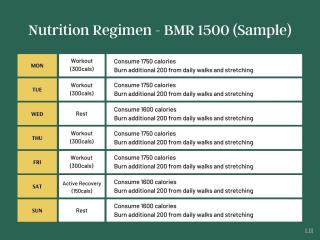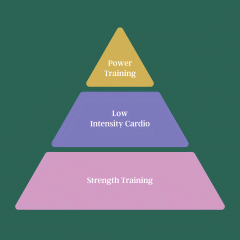With our busy lives, it feels harder and harder to plan our life effectively—to keep track of everything we currently have to do, and to plan the things we want to do in the future. This is where learning how to bullet journal can come in handy.
You may have invested in a paper or digital planner to keep track of everything, or a journal to note down your thoughts and ideas. You may have Post-It notes on your desk or used an online project management tool such as Asana or Trello.
The thing is, we know what we want to do and resolve to do it, but then life gets in the way and our initial excitement and commitment falls down.
In this article, I will help you focus on what matters despite the constant changes in life by knowing how to bullet journal.
Setting up Your Bullet Journal
Here’s a simple guide for setting up your bullet journal:
Lay out Your Index
This should ideally be on Page 2 of your bullet journal. This is where all of your plans and collections get organized and refer back to the specific page number. Start at the top of the page and list down.
For example, September may be on Page 6. Only index the things that are important to you and that you want to refer back to.
I will have an Index that Includes plans per month, long-term goals, weekly schedules, gratitude log, inspiring quotes, etc.
The Key
It’s suggested that you keep a key at the front or back of your bullet journal to track what all the symbols mean.
The Future Log
This is essentially how you lay out priorities, events, and appointments for the months ahead using bullet points.
This can be 12 months ahead or 6 months ahead. Then, choose how many items per month to list. Try to keep it around 10 in order to avoid feeling overwhelmed.
Monthly Log
The monthly log keeps track of all your current priorities, events, and appointments across the month.
The aim here is simplicity. Some people will write the date and day down the left hand side of the page for every day in the month.
Others will create boxes for each day to fill in and complete. Once you decide on which works for you, add in the actual event, task, or project.
The idea is to start the next month at the end of the existing month, rather than at the start of the month. As the month unfolds, you can update and add to it.
Daily Log
You can fill your day with all of the tasks and events, listed under the day’s date.
For many, this is where the bullet journal is exciting as you can use the method of rapid logging and use the symbols (from the key).
Once a task is complete, it gets crossed off with a simple X.
How to Bullet Journal Effectively
Now we’ve touched on a brief overview of how the bullet journal works, let’s get into 15 tips that you can use to get up and running with your own bullet journal today.
1. Define Your Purpose
Be crystal clear on your objective for using the bullet journal. The core aim of the journal is to increase productivity, but is that your main reason for using it?
Is it to bring together all of your notes, ideas, and to-dos in one place? Do you want to bring together your personal and business goals to track your progress? Do you want to be more mindful about your day? Do better at remembering things?
If you know what is motivating you, you have a better chance of really making it work in the long run.
2. Start at the Source
The video below is from bullet journal founder Ryder Carroll, who runs through the conventions of how the bullet journal works.
3. Keep It Simple
Many people start with a simple pen or pencil to get going, while others invest a little bit upfront and buy things like artist pens, midliners and fineliner pens and washi tape.
Now that you have your notebook, the next step is to number each of the individual pages in your bullet journal.
Whatever feels comfortable at the beginning, go with it.
4. Customize to Your Needs
Be clear why you are using the bullet journal, and customize it to suit the outcomes you’re looking for.
If you have specific things you want to keep in one place, e.g. a vision board or bucket list, you can carve out space by leaving blank pages for that.
If you want to track specific habits, such as how many hours you’re sleeping per night or when you’re exercising, you can track that as well.
You can spend as much or as little as you want on the planner. You can keep it simple or be a bit more creative and use colored gel pens, highlighters, or washi tape to suit your style.
5. Review Quarterly
When I coach private clients, we always set 90-day goals and then review performance on an ongoing basis.
One of the keys here is that the goal stays, but the path to achieving the goal can be fluid.
The same is true of your bullet journal. Sit down every quarter and review what’s working—which parts do you love to do and which things aren’t going so well?
Think about how you can expand the great and remove the bad to keep momentum and fascination with your bullet journal growing.
6. Plan in Advance
As with everything, planning in advance will save you time in the long run and will reduce the chance of overwhelm, especially when you are starting out.
Plan your weekly or daily spreads in advance (I personally do my weekly journal on Sunday night). You will then have a clear picture of your upcoming week but still have time to add things in later.
7. Set up Your Layouts
There are two main layouts that almost everyone will use.
These are the monthly spreads, which give you a clear overview of the month ahead. This is often a calendar style with each day in big blocks next to each other. You may, as you progress, choose to doodle and color-theme these months.
The next one is the weekly spread, where you lay out your week, typically on two pages, and complete as you would a diary.
You may be more comfortable with horizontal layouts, but it can be fun to experiment with a vertical listing of each day of the month.
The key thing is what you are recording. Focus on substance over style.
8. Try New Things (and Stop What Doesn’t Work)
You may start out using the traditional Ryder Carroll method or follow a method being used by one of your friends at the beginning.
The key here is to find your own style, one that works for you. If things aren’t clicking, then stop and find something that does.
This may become a mix of traditional planning mixed with more creative collections and trackers.
9. Start with One Collection
The bullet journal, at its core, is a productivity system, so it’s essential to begin future planning and life management with monthly spreads, weekly spreads, habit trackers, and dailies.
It is also a place to house your big ideas, a place for self-discovery and self-awareness, and a home for your dreams and goals.
A collection is simply a gathering together of things that are important to you under a simple heading.
This could be a bucket list of places to visit, a gratitude log, a list of books to read or podcasts to listen to, inspirational quotes, an exercise regime, or goals and dreams.
Start with one. Have fun with it and go from there.
10. Create a Habit Tracker
Having a habit tracker forces you to be honest with yourself and can inspire you to reach specific goals you may have.
Many of those who use a bullet journal credit tracking with helping to improve their mental and physical wellbeing.

You can track whatever is important to you right now. On a spread, list out all the habits you want to track on the left hand side.
This could be related to sleep, exercise, running, blogging, meditation, journaling, etc.
At the top, list all of the days in the month 1-31. Then, for each individual day, against each habit, color in whether you “completed” that habit.
At the end of the month, you can see how you are tracking against the habits you wanted to improve. If you have missed a few, look at ways that can improve next month.
11. Create a Habit
To ensure that the excitement of starting your bullet journal doesn’t wear off after a week or so, commit to working on your journal for a specific amount of time every day.
If tasks that you’ve entered haven’t been marked as complete or your collections aren’t updated regularly, you’ll get bored quickly.
It’s also important to set your weekly pages up in advance so you are ahead of the curve.
If you develop a daily habit and enjoy the experience of updating your bullet journal, you will develop your own personal rhythm that will help you organize your time more effectively.
12. Don’t Compare
Instagram and Pinterest are full of amazing images of other people’s journals, so it’s important to remember that your journal is unique to you.
You will develop your own style along the way, so don’t compare yourself to others. Motivation may drop and you may begin to try to copy the style of others.
The important thing to refer back to is why you wanted a bullet journal in the first place. If the aim is to be able to plan more effectively, then that’s all that matters if it works for you.
Seeing other planners and procrastinating will stop you from simply just getting started.
If you’re in the habit of comparing yourself to others, this article can help you break that habit.
13. Don’t Overdo It
Start small and build from there. Ease into using your bullet journal and get to know what works for you.
Overloading yourself at the beginning with lots of collections, daily trackers, and fully illustrated vision boards may lead you to abandon the bullet journal completely.
14. Give It Time (and Don’t Be a Perfectionist)
If you’re not used to using a planner or a journal, give yourself a good month to really get into it.
Don’t stress about your artistic abilities. It should be functional over beautiful every time.
If you’re worried about making mistakes at the beginning, you can simply use a pencil or an erasable pen.
15. Include Fun Stuff as Well
To keep motivated and inspired, use the bullet journal holistically to cover both work and home life.
Including things like memories, motivations, goals, exercise, gratitude, and dreams will balance out the daily, weekly and monthly work plans.
One of the great things about the bullet journal is that it should encompass your whole life and give you important events and achievements to look back on.
More About Journaling
Featured photo credit: Estée Janssens via unsplash.com





























































